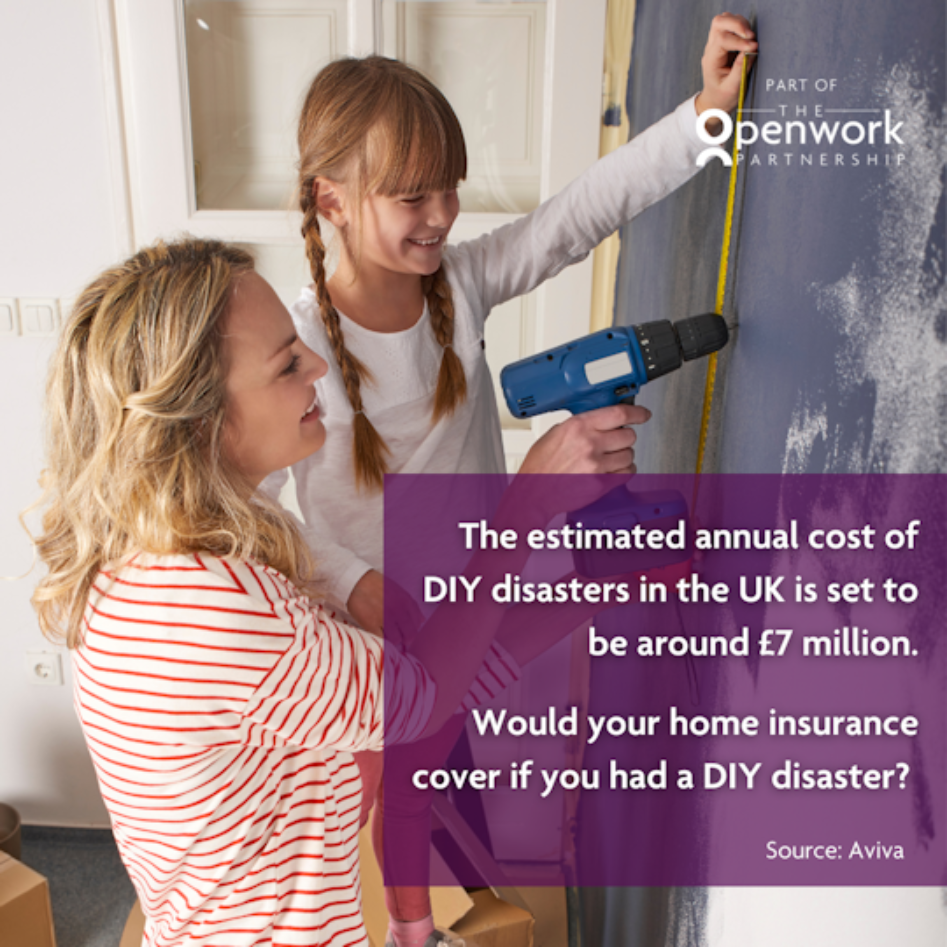DIY Insurance
Posted by JSCFinancial on Tuesday 20th of September 2022.
Home insurance - when your DIY dream turns into a nightmare
Harpreet is pretty good with his hands so he decided he’d save himself some money by carrying out his own loft conversion. It was all going quite well until he dropped his hammer. The hammer crashed through his bathroom ceiling and landed on the toilet, cracking the cistern. When Harpreet rang his home insurance company to report the incident, he discovered he wasn’t covered as he didn’t have accidental damage protection.
The cost of a DIY disaster
Harpreet’s mistake ended up proving quite costly, but it could have been worse as. Harpreet is far from alone in carrying out his own home improvements though. A study by Ironmongery Direct found that many Brits are prepared to take on jobs around the house. Although a bit of DIY can save you money, the research found that - when you get it wrong - it can prove extremely costly. Aviva estimated the annual cost of DIY disasters in the UK to be around £7 million. Harpreet was taking on a particularly risky project by attempting his own loft conversion, as they are the most expensive job to get wrong – potentially costing more than £35,000 to put right.
When it comes to taking risks, research found that young people are more willing to dice with danger than the older generation: millennials are most likely to have faced a DIY disaster, with two in five admitting they’ve had home improvements go wrong because they tried making upgrades to their property themselves.
So, if you don’t want to end up in Harpreet’s position, what should you do before embarking on a DIY project?
- Check your home insurance
Don’t assume that you’re covered for DIY accidents. Check the terms and conditions of your policy or give your insurer a call to make sure. Accidental damage protection usually comes as an optional extra, with standard home insurance only providing very limited cover for mishaps.
- Prepare thoroughly
To help DIY projects run as smoothly as possible, good preparation is key. We’ve come up with a checklist for you to go through before getting started:
- Make sure you have everything you need to complete the job before you begin. This will ensure you don’t end up trying to improvise with unsuitable tools etc.
- Carry out research to make sure you’re tackling the job in the most appropriate way – talk to the staff at your local DIY store, watch reputable YouTube tutorials etc.
- Where possible invest in good quality materials – look out for special offers from DIY retailers to make this more affordable.
- Allow yourself plenty of time to complete the job – you’re more likely to have an accident if you’re rushing.
- Leave the tricky stuff to the experts
Know your limitations and leave any major works to the professionals. If you attempt big jobs yourself, the chances are you won’t be covered by your home insurance. When it comes to electrical and plumbing work, you should always get an expert in – otherwise you risk invalidating your cover.
Key takeaways:
- Before embarking on any DIY project, check that your home insurance covers you for any mishaps.
- Prepare thoroughly for DIY tasks and make sure you allow yourself plenty of time to complete the job.
- Leave any major or specialist jobs to the experts or you risk invalidating your home insurance.

Please note: by clicking this link you will be moving to a new website. We give no endorsement and accept no responsibility for the accuracy or content of any sites linked to from this site.